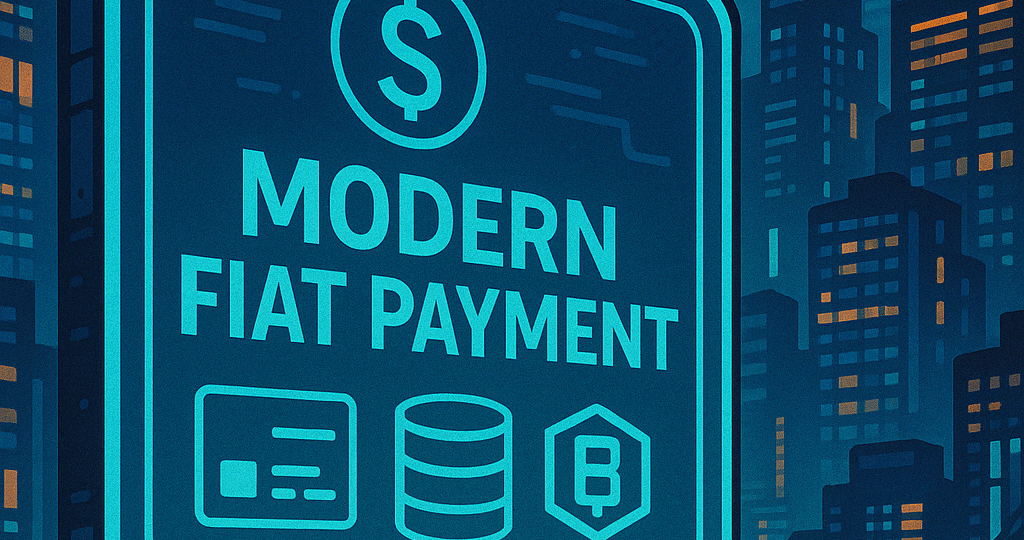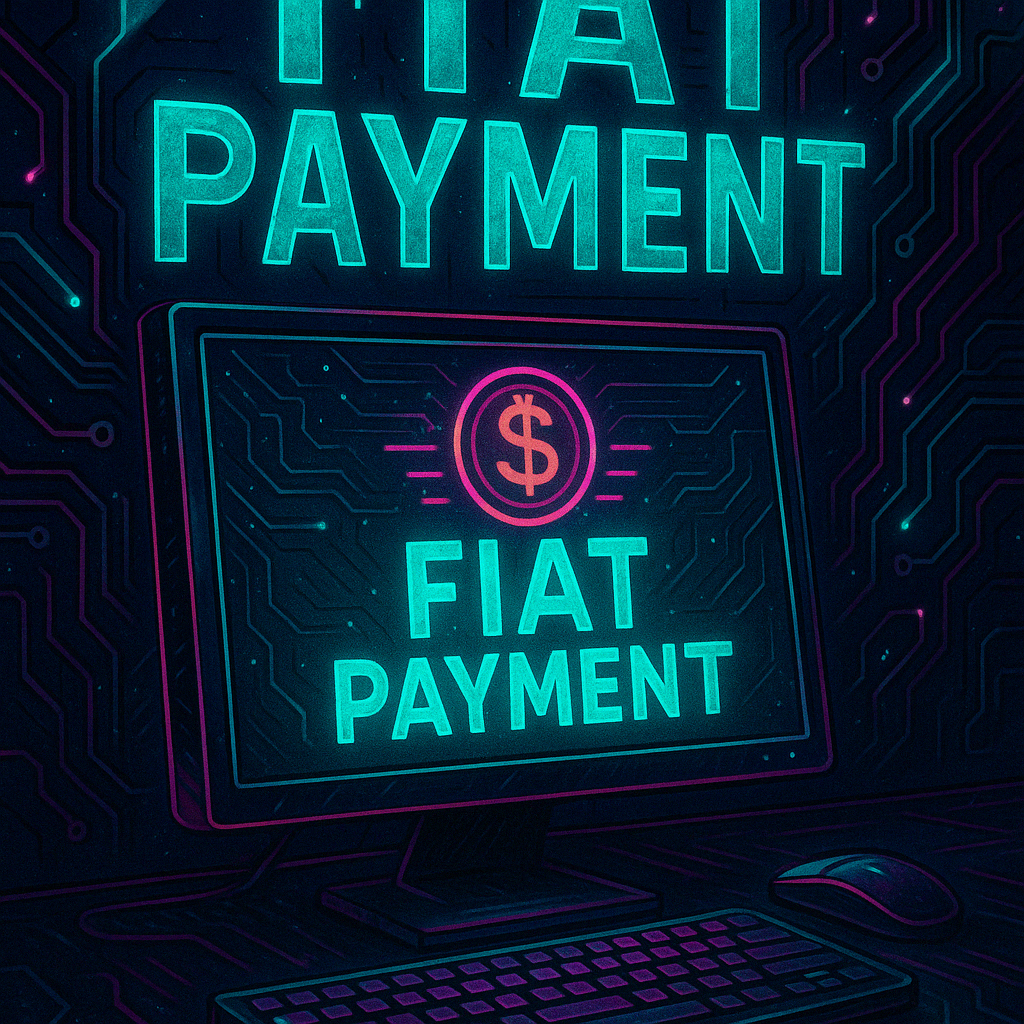Modern Fiat Payment Infrastructure: Secure, Scalable & Ready for Web2 and Web3
April 20, 2025 | by 16squaresmaster@gmail.com

Introduction
While crypto and digital assets gain traction, fiat currency remains the dominant payment medium powering global commerce. Today’s businesses—whether selling digital goods, managing multi-platform marketplaces, or integrating blockchain wallets—require flexible, secure, and fast fiat transaction systems.
From secure fiat invoicing and instant transaction processing to crypto-to-fiat payment solutions and multi-platform fiat support, this guide explores how to build and scale a future-ready fiat payment stack.
🔐 1. Secure Fiat Invoicing: Protecting Revenue and Compliance
Secure fiat invoicing enables businesses to send digital invoices that comply with regional tax laws and protect sensitive customer data.
Key Features:
-
Encrypted invoice links with auto-expiry
-
Embedded payment buttons (bank card, transfer, wallet)
-
VAT, GST, and multi-currency tax calculations
-
Real-time payment tracking and receipts
Best suited for freelancers, SaaS, B2B, and international service providers.
₿ 2. Digital Currency Payment Gateway: Bridging Fiat and Crypto
While crypto is growing, many customers still want to pay using digital currency and receive goods or services priced in fiat. A digital currency payment gateway enables that transition.
Benefits:
-
Accept BTC, ETH, USDT while settling in USD/EUR
-
Instant conversion to fiat at market rates
-
Reduce volatility exposure
-
Web3-ready integrations (wallets, NFTs, DeFi)
Top tools: NOWPayments, Coinbase Commerce, BitPay
📱 3. Multi-Platform Fiat Payments: Pay Anywhere, on Any Device
Consumers transact across devices. Multi-platform fiat payments ensure consistency from mobile apps and tablets to web checkouts and in-store terminals.
What to Offer:
-
Responsive checkout UIs
-
iOS/Android SDKs for in-app payments
-
QR code generation and wallet support
-
POS integration for hybrid digital-physical sales
This approach is essential for omnichannel retailers and mobile-first digital brands.
🛍 4. Fiat Payment Processor for Online Stores: Built for Speed and Scale
A fiat payment processor for online stores allows seamless acceptance of credit cards, debit cards, digital wallets, and bank transfers—all in local fiat currencies.
Key Features:
-
Checkout plugins (Shopify, WooCommerce, Magento)
-
Currency conversion at checkout
-
Subscription and one-click reorder support
-
Cart abandonment tracking
Popular options: Stripe, Mollie, PayPal, Square
⚙️ 5. Easy Fiat Payment Integration: Developer-Friendly and Fast
Easy fiat payment integration is essential for startups and digital products needing to launch quickly without deep development resources.
Integration Paths:
-
Hosted checkout pages
-
Low-code JavaScript widgets
-
Pre-built plugins for CMS and no-code builders
-
RESTful APIs for custom implementations
Great for MVPs, early-stage e-commerce stores, and digital content creators.
💱 6. Currency Conversion in Fiat Payments: Going Global, Simplified
Currency conversion in fiat payments enables global customers to pay in their native currency, while merchants settle in their home currency.
Must-Haves:
-
Real-time FX rates
-
Transparent currency breakdown at checkout
-
Automated multi-currency invoicing
-
FX fee tracking for accounting
Gateways like Adyen, Stripe, and Checkout.com handle automated conversion while offering payout control to the merchant.
⚡ 7. Instant Transaction Fiat Payments: Zero Delay, Maximum Confidence
Customers expect instant transaction fiat payments, especially for digital goods, streaming, SaaS access, and time-sensitive purchases.
Benefits:
-
Immediate delivery or access
-
Improved conversion and user satisfaction
-
Competitive edge in B2C checkout flows
-
Built-in dispute and chargeback support
Fast processing is offered by Stripe, Square, Razorpay, and Paystack.
🤝 8. Peer-to-Peer Fiat Payment Systems: Decentralized but Traditional
Peer-to-peer fiat payment systems let users transfer funds directly to each other without intermediaries—using fiat.
Examples:
-
Venmo (US), Zelle (US), Revolut (EU/UK)
-
Real-time direct bank transfers (e.g. UPI in India)
-
QR code or mobile number identification
-
Wallet-based P2P rails
These systems are increasingly being adapted for business use cases like tipping, on-demand payouts, and digital microtransactions.
🔌 9. Integrated Fiat Payment Gateway: Unified and Scalable
An integrated fiat payment gateway connects front-end checkout with back-end systems like order management, CRM, inventory, and accounting.
Must-Haves:
-
API access to all payment data
-
Native support for subscriptions, refunds, and discounts
-
Multi-role dashboards (finance, sales, support)
-
Webhooks for real-time status updates
Ideal for marketplaces, SaaS, and omni-channel e-commerce.
🔄 10. Crypto-to-Fiat Payment Solutions: Convert Flexibly
Crypto-to-fiat payment solutions allow businesses to accept crypto and auto-convert it to fiat—removing volatility risk while expanding payment options.
Use Cases:
-
Accepting crypto for fiat-denominated goods
-
Crypto donations converted to bank transfers
-
Stablecoin settlement to fiat for B2B transactions
Providers like Transak, MoonPay, and Ramp offer SDKs and APIs that integrate seamlessly with fiat payment systems.
🧠 11. Fiat Payment Management: Full Control from One Dashboard
A robust fiat payment management system gives businesses insight into every aspect of their revenue pipeline.
Features:
-
Centralized transaction logs and analytics
-
Refund, chargeback, and dispute handling
-
Multi-user permissions
-
Reporting by geography, payment type, and currency
Whether you’re managing recurring billing, direct sales, or cross-border payouts, centralized management helps you stay compliant, fast, and profitable.
Conclusion
Whether you’re operating in Web2 or bridging into Web3, fiat payment systems remain the foundation of digital monetization. From peer-to-peer transfers and secure invoicing to crypto conversion and real-time settlements, businesses need tools that are fast, flexible, and global.
Your Ideal Fiat Payment Stack Should Offer:
✅ Instant and multi-platform fiat transaction support
✅ Seamless integration with digital and crypto gateways
✅ Flexible currency conversion and payout options
✅ Comprehensive fraud protection and management tools
✅ Unified dashboards for full fiat payment management
RELATED POSTS
View all


